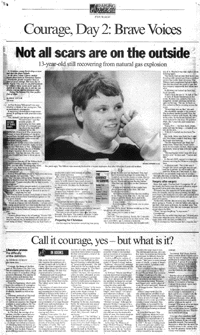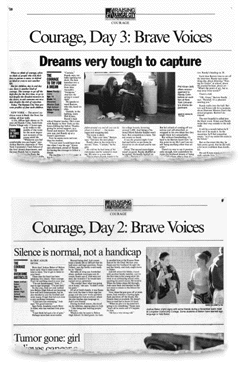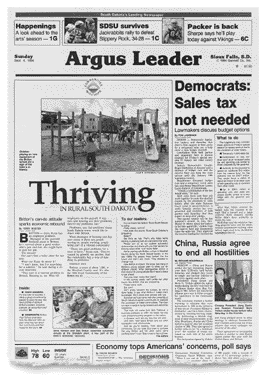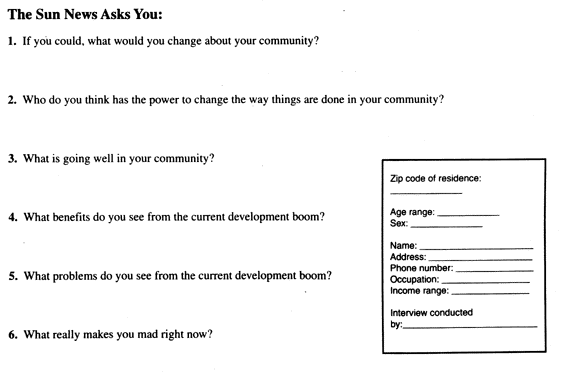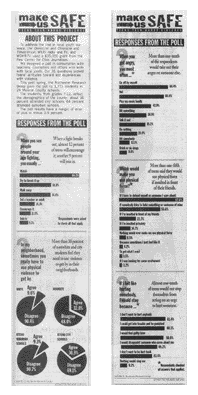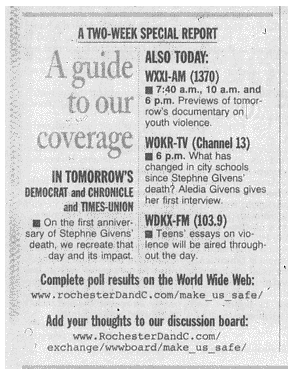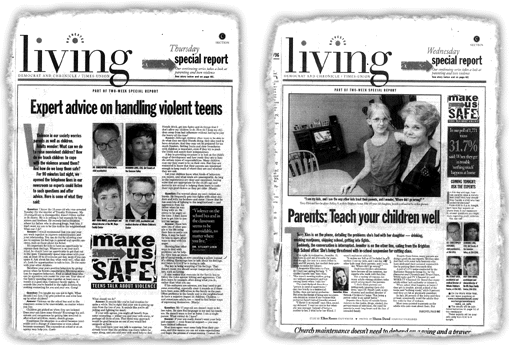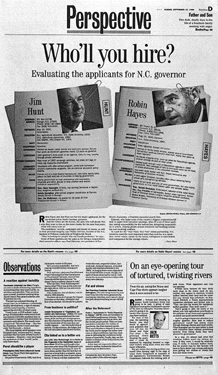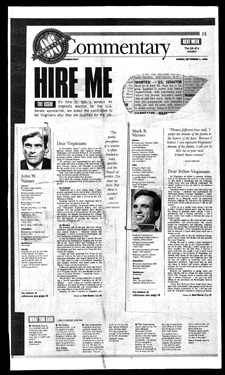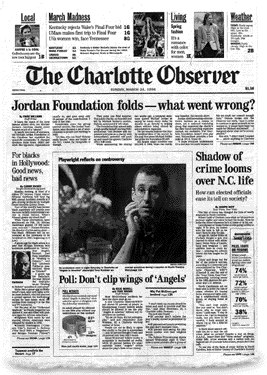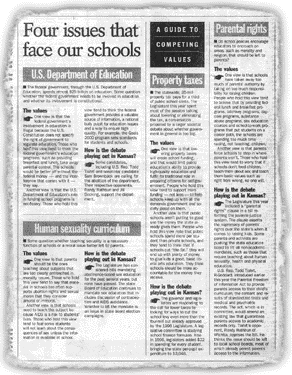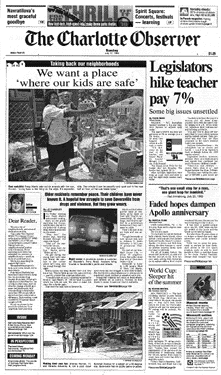– Jennie Buckner, Editor, The Charlotte Observer |
In Kansas City, the Star enlisted 12 prominent citizens — including academics, theologians, and physicians — to choose the “core values” important to raising the community’s young people.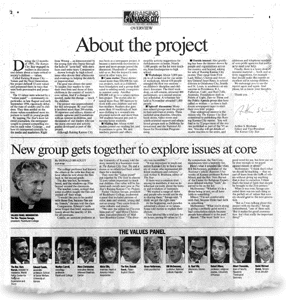 (IMAGE 38K) (IMAGE 38K) |
Civic journalism doesn’t just happen. Involving citizens in the coverage of community issues takes planning, allocation of scarce newsroom resources and a commitment to the long haul. Consequently, most efforts are neither cheap nor easy.
The process usually begins with a perceived community problem: persistent crime in particular neighborhoods, young people who seem to be morally adrift, jobs that have evaporated.
From that perception comes an idea for a newspaper’s coverage, an idea that treats readers as participants in the process and not just as passive spectators. To begin, the idea is tested with the citizens themselves (“Is this a problem and do you want to help us search for solutions?”) and then framed in terms readers can best relate to.
Citizen involvement at every stage characterizes the coverage. Not only does the newspaper put forth its best reporting and writing covering the “problem,” it also encourages and covers extensively citizen input and participation. How the community responds becomes an essential part of the story.
ASSESSING A COMMUNITY’S NEED
How do editors decide whether a local issue is worth the commitment required of a civic journalism initiative? Most begin by asking their readers. “Asking” can be done in many ways: polls, focus groups, panels of experts, panels of citizens, community forums, solicitations printed in the newspaper. In the end, the decision is the editors’, but citizen input is essential from the very beginning.
| The Star followed through by publishing comprehensive packages on each value. | |
The Panel’s Values:
|
|
|
||
|
||
|
||
|
||
|
||
|
||
TESTING THE IDEA
Crime was the topic in St. Paul. To help its reporters and editors better understand how attitudes and experiences differ from place to place across the Twin Cities, the Pioneer Press conducted an extensive telephone poll (2,853 adults) that provided data not only for the region and its two largest cities, but also for six specific neighborhoods. This initial research enabled the newspaper’s reporters to analyze important neighborhood differences. 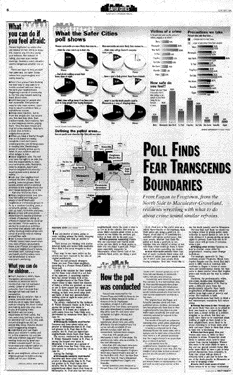  is traditional journalism, but often insufficient to engage citizens. They don’t find in such coverage anything they personally can do about the problem. Civic journalism demands that we go further by exploring how the community can actually begin to deal with the problem.</p>
<table border=)
|
As part of their election coverage, The Portland Newspapers with WGME-TV (CBS) and Maine Public Broadcasting conducted a series of statewide polls to help discern voter attitudes about the issues in the 1996 campaign and to help frame year-long discussions for a group of Sanford citizens. 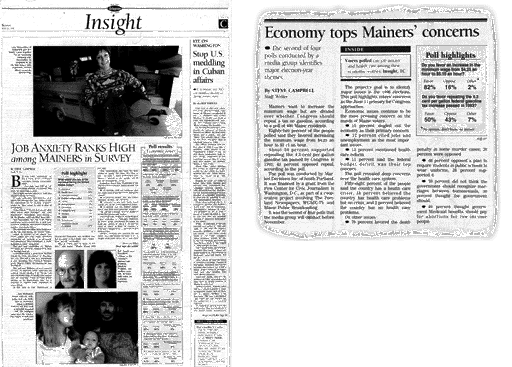 |
As a result, the newspaper goes back to the readers in many ways — to field test the premise, to gather more data, to deepen the understanding of the journalists by putting them in closer touch with citizens. The objective is not to “solve” the problem; it is to use citizens to help produce better coverage as the news organization works toward reporting the problem in ways that will connect with citizens.
FRAMING THE COVERAGE
How you frame a question often determines the nature of the answer. If you see a story in terms of a contest, with two sides of an issue squaring off in public view, the narrative will fill that adversarial frame. But often other voices need to be heard.
Civic journalism seeks to broaden the frame on many news stories, to give other parties a voice on an issue, and to give readers and viewers a sense of what their role is. Adjusting the framing usually requires adjusting the master narrative; often it ends up less conflict-driven. Election campaigns, for example, also can be covered as job interviews with the candidates, not just as contests that some will win and others will lose. Doing so helps citizens more clearly understand their role in election campaigns and see the overall process in a slightly different way.
Effective framing sets a direction and tone for a project by bringing key stakeholders — parents, teenagers, voters, the community’s disenfranchised — into different focus. Telling the story from a particular point of view can make a difference. In Duluth, Minn., the News-Tribune chose to frame a series on violence by concentrating on men, especially how they learn and sustain violent behavior. In Detroit, the Free Press told the story of teen violence through the eyes of the teens themselves. In Kansas City, the Star framed the challenge of raising children around key values.
EXPLAINING THE PROJECT
| |||||||||||||||||

